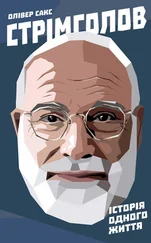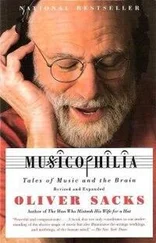Electrolysis could not have been discovered before Volta’s pile, for the most powerful electrical machines or Leyden jars were wholly impotent to cause chemical decomposition. It would have required, Faraday later calculated, the massed charge of 800,000 Leyden jars, or perhaps the power of a whole lightning stroke, to decompose a single grain of water, something that could be done by a tiny and simple 1-volt cell. (But my 1-volt cell, on the other hand, or even the eighty-cell battery that Marcus showed me in the portable radio, could not make a pithball or an electroscope move.) Static electricity could generate great sparks and high-voltage charges (a Wimshurst machine could generate 100,000 volts), but very little power, at least to electrolyze. And the opposite was so with the massive power, but low voltage, of a chemical cell.
* * *
If the electric battery was my introduction to the inseparable relation of electricity to chemistry, the electric bell was my introduction to the inseparable relation of electricity to magnetism – a relation by no means self-evident or transparent, and one that was discovered only in the 1820 s.
I had seen how a modest electric current could heat a wire, give a shock, or decompose a solution. How was it managing to cause the oscillating movement, the clatter, of our electric bell? Wires from the bell ran to the front door, and a circuit was completed when the outside button was pressed. One evening when my parents were out, I decided to bypass this circuit, and connected the wires so that I could actuate the bell directly. As soon as I let the current pass, the bell hammer jumped, hitting the bell. What made it jump when the current flowed? I saw how the bell hammer, which was made of iron, had copper wire coiled around it. The coil became magnetized when a current flowed through it, and this caused the hammer to be attracted to the iron base of the bell (once it hit the bell, it broke the circuit and fell back into its original place). This seemed extraordinary to me: my lodestones, my horseshoe magnets, were one thing, but here was magnetism that appeared only when a current flowed through the coil, and disappeared the moment it stopped.
It was the delicacy, the responsiveness, of compass needles which had first given a clue to the connection between electricity and magnetism. It was well known that a compass needle might jerk or even get demagnetized in a thunderstorm, and in 1820 it was observed that if a current was allowed to flow through a wire near a compass, its needle would suddenly move. If the current was strong enough, the needle could be deflected ninety degrees. If one put the compass above the wire rather than below it, the needle turned in the opposite direction. It was as if the magnetic force were forming circles around the wire. [35]
Such a circular movement of magnetic forces could readily be made visible by using a vertical magnet sticking in a bowl of mercury, with a loosely suspended wire just touching the mercury, and a second bowl in which the magnet could move and the wire was fixed. When a current flowed, the loosely suspended wire would skitter in circles around the magnet, and the loose magnet would rotate in the opposite direction around the fixed wire.
Faraday, who in 1821 designed this apparatus – in effect, the world’s first electric motor – immediately wondered about its reverse: if electricity could produce magnetism so easily, could a magnetic force produce electricity? Remarkably, it took him several years to answer this question, for the answer was not simple. [36]Putting a permanent magnet inside a coil of wire did not generate any electricity; one had to move the bar in and out, and only then was a current generated. It seems obvious to us now, because we are familiar with dynamos and how they work. But there was no reason at the time to expect that movement would be necessary; after all, a Leyden jar, a voltaic battery, just sat on the table. It took even a genius like Faraday ten years to make the mental leap, to move out of the assumptions of his time into a new realm, and to realize that movement of the magnet was necessary to generate electricity, that movement was of the essence. (Movement, Faraday thought, generated electricity by cutting the magnetic lines of force.) Faraday’s in-and-out magnet was the world’s first dynamo – an electric motor in reverse.
It was curious that Faraday’s two inventions, the electric motor and the dynamo, discovered around the same time, had very different impacts. Electric motors were taken up and developed almost at once, so that there were battery-powered electric riverboats by 1839, while dynamos were much slower to develop and became widespread only in the 1880 s, when the introduction of electric lights and electric trains created a demand for huge amounts of electricity and a distribution system to keep them going. Nothing like these vast, humming dynamos, weaving a mysterious and invisible new power out of thin air, had ever been seen, and the early powerhouses, with their great dynamos, inspired a sense of awe. (This is evoked in H.G. Wells’s early story ‘The Lord of the Dynamos’, in which a primitive man begins to see the massive dynamo he looks after as a god who demands a human sacrifice.)
Like Faraday, I started to see ‘lines of force’ everywhere. I already had battery-powered front and rear lamps on my bike, and now I got dynamo-powered lights as well. As the little dynamo whirred on the back wheel, I would think sometimes of the magnetic lines of force being cut as it whirred, and of the mysterious, crucial role of motion.
Magnetism and electricity had seemed at first completely separate; now they seemed to be linked, somehow, by motion. It was at this point that I turned to my ‘physics’ uncle, Uncle Abe, who explained that the relationship between electricity and magnetism (and the relationship of both to light) had indeed been made clear by the great Scottish physicist Clerk Maxwell. [37]A moving electrical field would induce a magnetic field near it, and this in turn would induce a second electrical field, and this another magnetic field, and so on. With these almost instantaneous mutual inductions, Maxwell envisaged, there would be, in effect, a combined electromagnetic field in extremely rapid oscillation, and this would expand in all directions, propagating itself as a wave motion through space. In 1865, Maxwell was able to calculate that such fields would propagate at 300,000 kilometers per second, a velocity extremely close to that of light. This was very startling – no one had suspected any relationship between magnetism and light; indeed, no one had any idea what light might be, although it was well understood that it was propagated as a wave. Now Maxwell suggested that light and magnetism were ‘affections of the same substance, and that light is an electromagnetic disturbance propagated through the field according to electromagnetic laws.’ After hearing this, I began to think of light differently – as electric and magnetic fields leapfrogging over each other with lightning speed, braiding themselves together to form a ray of light.
It followed, as a corollary, that any varying electric or magnetic field could give rise to an electromagnetic wave propagating in all directions. It was this, Abe said, that inspired Heinrich Hertz to look for other electromagnetic waves – waves, perhaps, with a much longer wavelength than visible light. He was able to do this, in 1886, by using a simple induction coil as a ‘transmitter’ and small coils of wire with tiny (a hundredth of a millimeter) spark gaps as ‘receivers.’
When the induction coil was set to sparking, he could observe, in the darkness of his lab, tiny secondary sparks in the small coils. ‘You switch on the wireless’, said Abe, ‘and you never think of the wonder of what’s actually happening. Think how it must have seemed on that day in 1886 when Hertz saw these sparks in the darkness and realized that Maxwell was right, and that something like light, an electromagnetic wave, was raying out from his induction coil in every direction.’
Читать дальше












